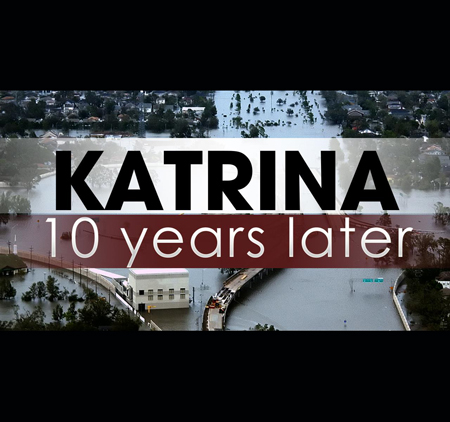André Solórzano
Manager, Data Insights, CECP
August 21, 2015–At the 10th anniversary of Hurricane Katrina, CECP looks back at how disaster relief response has changed among companies. We found that overall, the data show that aggregate giving from corporations for disaster relief has declined over the last five years. A deeper look into the data and additional resources shows that it’s a complex story.
We explored:
- CECP’s Giving in Numbers trends on corporate societal engagement;
- Questions and feedback from CECP companies; and
- External data on disaster trends.
Main findings include:
- Disasters declined globally from 2010 to 2014 in terms of total damage in dollars, occurrence, and types (i.e., floods, epidemics, and landslides).
- Aggregate giving (cash and non-cash, domestic and international) to disaster relief decreased by 52% from 2010 to 2014. Foundation cash was the primary type of giving.
- In further aligning their societal investment strategies with their core business strategy, the majority of companies reduced their disaster response when it did not fit within the expertise and skills of their company or it did not occur within their community, broadly defined.
- Yet, 25% of companies increased giving to disasters from 2010 to 2014.
- This signals that it is best for companies with strategic and specific skills and expertise, not all, to focus on disaster relief as they are best-placed to be a part of the response effort. Disaster relief is a long-term effort and because of these companies’ areas of business focus, it will be sustainable.
- In 2014, the Financial Industry provided the most disaster relief related giving.

What CECP Companies are Asking Us
Over the past year, CECP companies have asked an increasing number of questions related to their disaster relief policies. Questions came in two general categories:
- Updating policies to expand beyond weather-related disasters, in some cases inspired by the Ebola crisis, or,
- Challenges to meet stakeholder expectations on providing relief based on the severity of the event, which at times can clash with strategically aligned societal engagement programs.
To explore this further, CECP asked practitioners at the 2015 CECP Summit about whether their companies had rethought how they respond to disaster relief. Forty-nine percent of 137 practitioners reported they were reconsidering their response policies on disaster relief. Of these respondents, the reported reasons to change their disaster relief policies were:
- To limit the response to disasters that are most connected to their business (55%).
- To expand what they define as a disaster (e.g., humanitarian crises) (24%).
- To focus more on long-term rehabilitation (21%).
Macro Disaster Trends
Looking at broader global disaster trends, the Centre for Research on the Epidemiology of Disasters’ (CRED) Emergency Events Database (EM-DAT)tracks information on number of disasters, dollars of damage and total affected people. According to their data, total damage caused by disasters (either Complex, Natural or Technological Disasters) decreased from $152 billion in 2010 to $98 billion in 2014 (a decrease of 36%). Particularly, total damage peaked in 2011 at $364 billion. EM-DAT also shows that occurrence of total disasters has decreasedover the course of the last 5 years, from 670 disasters in 2010 to 550 disasters in 2014.Between 2010 and 2014, reductions occurred mainly in floods (-46), epidemics (-21) and landslides (-16). But, despite a reduction in the number of total disasters, when we look back one year, the number of total affected peopleincreased from 97 million people in 2013 to 142 million in 2014.
Giving in Numbers Trends
Total Giving
Data from the Giving in Numbers annual survey show that aggregate giving from corporations for disaster relief decreased by 52% from 2010 to 2014—from $100 Million to $34 million (or 65% from its peak in 2011). (a 5-Year Matched-Set of 49 companies) (Figure 1). Among these companies, the average giving for disaster relief by company decreased from $1,468,000 in 2010 to $704,000 in 2014. The annual median giving for disaster relief went from $500,000 to $381,000 between the same years. Disaster relief giving as percentage of aggregate giving also decreased from 1.8% to 0.8%. When analyzing the subset of companies that increased their giving for disaster relief between 2010 and 2014—25% of companies–we observe a strong increase in disaster relief giving (164%). The main source of giving for disaster relief among these companies was non-cash (42%). Companies that decreased their Total Giving for disaster relief—75% of companies–had a reduction of 69%. The main source of Total Giving for disaster relief among those companies that decreased this type of giving was foundation cash (52%).
Type of Giving
Giving in Numbers data also show an interesting pattern in the type of giving for disaster relief for this 5-year matched-set of companies. Foundation cash was the top source for disaster relief between 2010 and 2014. Interestingly, direct cash increased its share of giving for disaster relief. In 2010 it represented 26% of disaster relief giving but in 2014 it increased to more than a third as 35% of total giving. Typically, direct cash is more flexible and thus more responsive than foundation cash.
Industry
The Giving in Numbers data also show that in 2014 the industry that provided the most in terms of aggregate giving funds for disaster relief was Financials (26%), which is in line with their share of aggregate cash giving to all program areas (25%). Industrials (20%) came in second, even though they only represent 8% of aggregate cash giving to all program areas.
Corporate Matches of Employee Giving
The Giving in Numbers survey also collects information on matching giftcontributions across five matching gift programs, one of which is disaster relief matching. Eligibility for international employees was highest for disaster relief matching gift programs compared to the other four programs.
In terms of the form of matching gifts for disaster relief, when analyzing a 5-year matched-set of 91 companies that gave foundation cash or direct cash for disaster relief matching gift programs, we observe a substantial increase in the share of foundation cash. In 2010 foundation cash represented 29% of matching gift programs for disaster relief among these companies. In 2014, foundation cash translated into 75% of matching gift cash for disaster relief.
Disaster Relief Case Studies
Companies respond to disasters in many more ways than just supporting organizations such as the American Red Cross. Given companies’ scope, scale, skills, and resources, they can also respond through:
Expertise
- Zurich Insurance Group has been using their risk expertise to create a Global Flood Resilience Program that has a cross-sector approach with the private sector, academia, and community partners. This program identifies pre-event solutions and conducts action research to improve knowledge about floods and to help alleviate the impact from floods among the most vulnerable communities around the world.
Employee Support
- After Hurricane Katrina, Starwood Hotel and Resorts Worldwide helped relocate employees to Dallas, Houston, and San Antonio, as well as opened a hotel in Atlanta that was closed for renovations for 500 employees. They also continued to pay their employees and gave each full-time employee impacted by the storm a check for $2,000.
In-Kind Resources
- Wal-Mart donated the use of more than 25 vacant facilities in impacted states for relief efforts, including evacuee shelters, supply depots, food pantries, a tent city for utility crews, a dialysis clinic, and a pharmacy filling prescriptions free of charge for emergency medical needs. Find out more about Wal-Mart’swork in this area that continues today.
Matching Gifts
- GE employees from 32 countries made more than 15,000 personal cash contributions totaling $4 million, which were matched 100% by the GE Foundation employee matching gifts program. Read more about GE’s disaster response, here.
CECP remembers the tragedy that struck the Gulf States and beyond 10 years ago and applauds companies for continuing their commitment to being strategic in the application of their investments into community challenges. Find out more about Giving in Numbers and watch for the 2015 Edition of the report, due out September 21. For a deeper look at the data, please contact CECP to discuss further.


